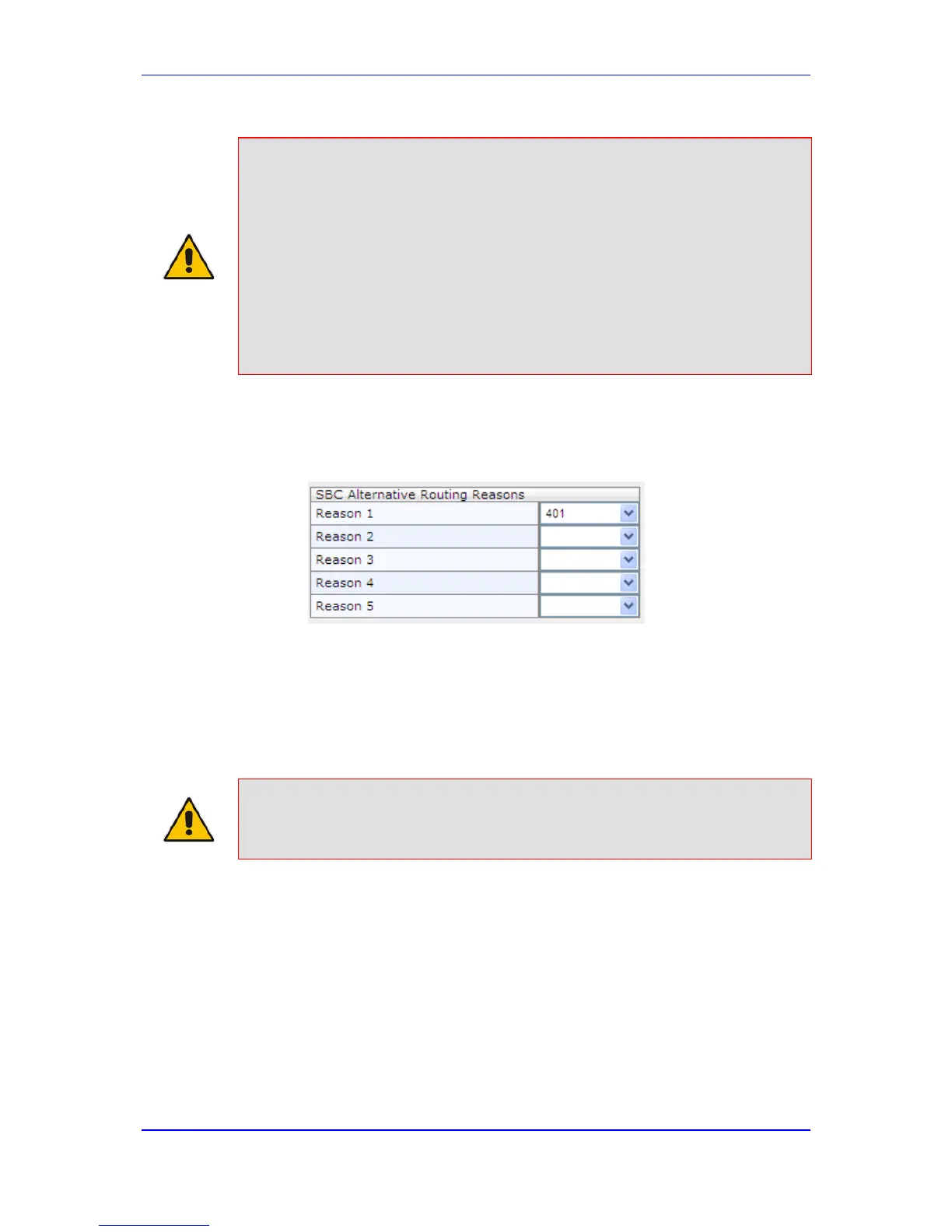Notes:
• Alternative routing occurs even if this table is not configured upon
scenarios where no response, ICMP, or a SIP 408 response is received.
• SIP requests pertaining to an SRD or IP Group that reach the call limit
(maximum concurrent calls and/or call rate) as defined in the Call
Admission table are sent to an alternative route if configured in the IP-to-
IP Routing table for the SRD or IP Group. If no alternative routing rule is
located, the device automatically rejects the SIP request with a SIP 486
"Busy Here" response.
• The SBC Alternative Routing Reasons table can also be configured
using the table ini file parameter, SBCAlternativeRoutingReasons or CLI
command, configure voip > sbc routing sbc-alt-routing-reasons.
To configure SIP reason codes for alternative IP routing:
1. Open the SBC Alternative Routing Reasons page (Configuration tab > VoIP menu >
SBC > Routing SBC > Alternative Routing Reasons).
Figure 31-10: Alternative Routing Reasons Page
2. Configure different call failure reasons that invoke alternative routing.
3. Click Submit to apply your changes.
31.5 SBC Manipulations
This section describes the configuration of the manipulation rules for the SBC application.
Note: For additional manipulation features, see the following:
• 'Configuring SIP Message Policy Rules'.
• 'Configuring SIP Message Manipulation' on page 232.
The device supports SIP URI user part (source and destination) manipulations for inbound
and outbound routing. These manipulations can be applied to a source IP group, source
and destination host and user prefixes, and/or user-defined SIP request (e.g., INVITE,
OPTIONS, SUBSCRIBE, and/or REGISTER). Since outbound manipulations are
performed after routing, the outbound manipulation rule matching can also be done by
destination IP Group. Manipulated destination user and host are performed on the following
SIP headers: Request-URI, To, and Remote-Party-ID (if exists). Manipulated source user
and host are performed on the following SIP headers: From, P-Asserted (if exists), P-
Preferred (if exists), and Remote-Party-ID (if exists).

